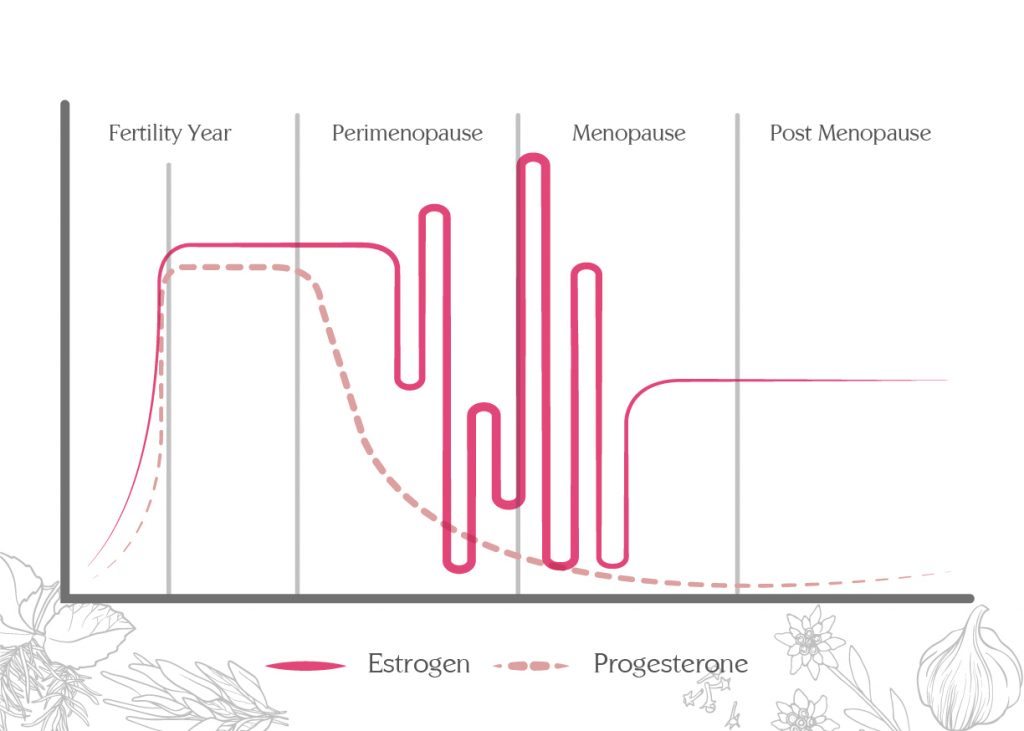There are many advantages of being over 40, many called middle age. One of which is that we takes a lot more interest and thus have much better understanding of how our body works compares to when we were in our 20’s or even 30’s. We learn to filter out the noise and choose to listen within.
As we are always reminded, knowledge is power. Understanding our endocrine system and what aging does to the dance of hormones empowers us to fully embrace middle age and there is no reasons why the years ahead not to be the best years. If you are not yet convinced that turning 40 is not the end of the world, this article in Huffington post lists out 14 things to love about turning 40
The endocrine glands & hormones in our body is an amazing integrated system. It’s the extensive network of glands that produce the hormones we need to regulate metabolism, sexual function, growth, mood and more. As we age, we produce more of some hormones and less of others (mostly the latter), which causes hormonal imbalance symptoms in some females. This transition period is often called Perimenopause.
So what is Perimenopause, what are the symptoms and how to manage it naturally?
Perimenopause is a transition period to menopause. Typically perimenopause starts for women in their 40s, but signs of early menopause may also occur in 30-something women. This transition period can last average between 5-10 years.
Perimenopause, rather than a time of declining estrogen as some believes, is characterized by three major hormonal changes: erratically higher estradiol levels, decreased progesterone levels and disturbed ovarian-pituitary-hypothalamic feedback relationships. Despite many research has been completed to analyze these hormonal changes in female body, it is not always easy to determine exactly when perimenopause stage starts.
Midlife women with regular menstrual cycles may have a diagnosis of perimenopause if they experience any three of the following 10 changes:
- Heavier and/or longer flow
- Shorter or longer menstrual cycles than usual (less than 25 days or more than 35 days)
- Sore, swollen & lumpy breasts
- Light sleep with mid sleep wakening
- Increase cramps
- Night sweats, in particular few days before start of flow
- Can remember more dreams
- Severe mood swings
- Weight gain without changes in exercise or eating
Perimenopause symptoms are created by changes in the levels of these three sex hormones:

Oestrogen
The hormone oestrogen is made up of a group of three hormones: oestradiol, oestrone and oestriol. It is produced from the cells around the eggs in your ovaries.
Oestrogen helps to maintain muscle tone, the endometrium (lining of the uterus or womb), the cervix (the lower, narrow part of the uterus where it joins the vagina), the ducts in the breasts, and it helps in the protection of our bones.
Perimenopause is a time during which estradiol levels become erratic and often high before eventually becoming lower than in reproductive-aged during late stage of the transition (just before menopause). Thus many of the symptoms of perimenopause are also associated with unusually high levels of estradiol.
Progesterone
Progesterone production is lower in perimenopause and continue to decrease towards menopause. These lower levels are caused by three mechanisms: 1) decreased progesterone production within normal-length ovulatory cycles; 2) shortened luteal phase lengths within ovulatory cycles; and 3) more frequently anovulatory cycles.
Progesterone is responsible for changes to mucus in the cervix, from thin to thicker. It reduces acidity levels in the vagina, works on milk cells in the breasts, and influence our mood. Thus it is also called “happy hormones”
Testosterone
We often think of testosterone as more of a male hormone, particularly because of its influence on hair growth and the voice. However, testosterone is also an important female hormone. It has a role in women’s sexual desire and arousal, overall emotional wellbeing, and bone and muscle strength.
Rather than its levels dropping suddenly or dramatically at menopause, testosterone decreases gradually with age.
Perimenopause symptoms
For some, perimenopause causes few health issues. But around 20% of women experience moderate to severe symptoms. Most common ones are:
- Hot flushes
- Night sweats
- Problems with falling asleep, staying asleep and sleep quality
- Breast tenderness
- Lack of energy
- Trouble concentrating/brain fog
- Irregular periods
- Vaginal dryness
- Loss of libido (sex drive)
- Migraines
- Mood swing – these may include feeling more teary and irritable or more severe symptoms of anxiety and mild depression may also occur
- Weight gain, despite no changes to diet or exercise.
How to balance hormone naturally
If perimenopause symptoms becomes too much to bear and disrupt your quality of life, don’t put up with it. There are hormonal imbalance treatments available to provide relief. It is important to speak to your physician about your symptoms first and foremost.
They might prescribe hormone replacement therapy (HRT) involving taking oral pills of oestrogen/progesterone and also suggest other more natural ways to manage the symptoms. Before going the route of HRT, be sure to know all the possible side effects and make an informed decision.
Bio-identical progesterone cream is a more natural hormone therapy for women with minimal side effects. It helps to balance out the elevated oestreol level during the transition period while at the same time elevate the progesterone level. This helps some women to manage symptoms of moodiness, hot flashes, brain fog etc.
There are other less obtrusive hormonal imbalance treatment involving complementary therapy & lifestyle changes.
Complementary therapies
Some women find relief from using traditional herbs to manage their perimenopause symptoms. Herbs such as black cohosh, dong quai and ginseng have traditionally been used to relief some hormonal imbalance symptoms. It is important to supplement with the right herbs and dosage. You can experiment with some herbs and start with lower dosage, listen to how your body reacted to it. We also recommend speaking to practitioner for additional support.
Lifestyle Changes
Tweaking daily habits can boost your health, support your body through the changes of perimenopause and for an easier menopause
* Practice high level of presence (engage all the senses) in everyday activities
This can be in a form of traditional meditation or doing everyday activities such as washing dishes, preparing meals, etc in a different, slower, more intentional way.
* Making healthy food choices
Get familiar with hormone balancing recipes that support healthy hormone balance:
- Lots of vegetables with lean protein
- eat nutritious low GI breakfast
- Choose wholegrain
- avoid sugary food
- caffeine & alcohol in moderation.
- Include more seeds such as flax seed, sesame seeds, etc.
* Engage in regular physical activity
“Active women have fewer and less distressing perimenopausal symptoms,” says Dr Helen Brown, head of Translation, Education and Communication at Jean Hailes. It is recommended to have at least 30 minutes of physical activities every single day and the benefit is significantly increase when you mix slow paced exercise (walking, yoga) with more vigorous ones (cardio, jogging etc)
* Avoiding Endocrine Disrupting Chemicals (EDC) or xenoestrogens
You can’t control every chemical that you come into contact. But you can make more informed choices about what you eat, drink, bring into your home, and decide to keep or throw away.
- Seek alternatives. Choose free BPA & phthlates products in plastic & cleaning/beauty products
- Keep it fresh. Minimize consumption of processed foods as much as possible, and use filtered as opposed to bottled water.
- Watch out for leaching. Avoid storing canned or plastic-packaged foods in hot areas, like the trunk of a car on a summer day. Also, avoid microwaving or heating food in plastic containers. EDCs could leach out of the container and into your food and body.
- Reduce pesticide use. Avoid pesticide use in garden. Choose organic produce where possible. Or wash fresh fruit and vegetables well

